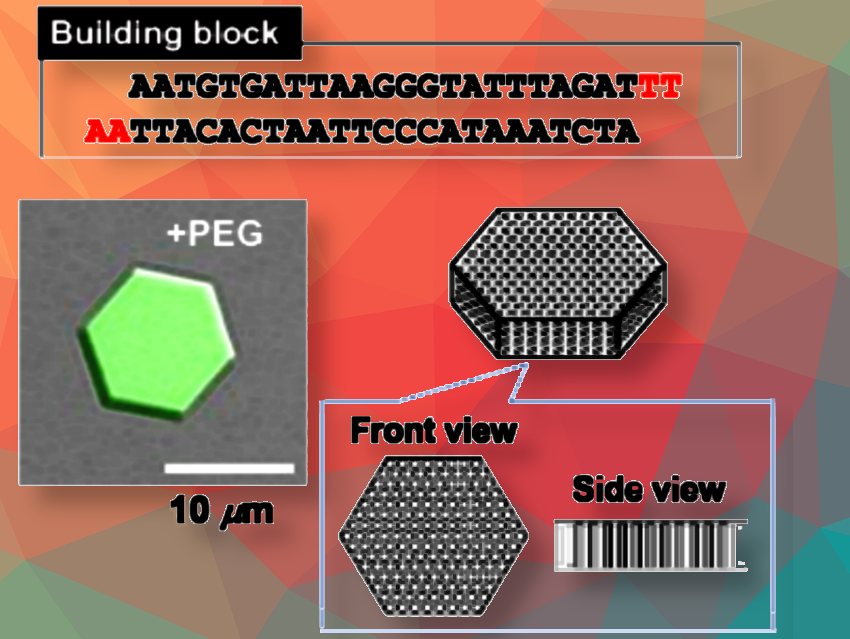Hexagonal structures, such as honeycombs, snowflakes, and graphite, are often observed in nature. In in vitro experiments, nucleosome core particles and double-stranded (ds) DNA have also been observed to assemble in the hexagonal liquid crystalline phase under certain conditions. In vivo, DNA packed into a liquid crystalline phase is found in bacteriophages, sperm heads, and dinoflagellate chromosomes, among others. The control of self-assembled liquid crystals of biological building blocks has attracted attention, for example, from the perspective of molecular engineering. In recent years, various DNA crystals have been developed that self-assemble by base pairing.
Tetsunao Makino, Daisuke Nakane, and Makiko Tanaka, University of Electro-Communications (UEC), Tokyo, Japan, have discovered a novel micro-sized hexagonal liquid crystalline DNA formed in aqueous-salt poly(ethylene glycol) solutions. To the surprise of the researchers, the independent micro-sized hexagonal liquid crystalline DNA was formed from only one pair of short dsDNA. The team could clearly see this even with an ordinary light microscope. The formation of the hexagonal liquid crystalline DNA was highly dependent on the DNA sequence, heating, and the concentrations of DNA and polymer in the solution.
Each DNA strand has 23 complementary bases and an overhang of two bases. The complementary overhangs promote end-to-end stacking between the dsDNAs in the liquid crystalline phase through hydrogen bonding of base pairs. Parallel alignments of stacked dsDNA in the condensed hexagonal phase were strongly suggested using polarization microscopy.
According to the team, micro-sized hexagonal liquid crystalline DNA may have great potential in materials science and biomedical applications, such as biomedicines and drug delivery.
- Self‐assembled micro‐sized hexagons built from short DNA in a crowded environment,
Tetsunao Makino, Daisuke Nakane, Makiko Tanaka,
ChemBioChem 2022.
https://doi.org/10.1002/cbic.202200360




